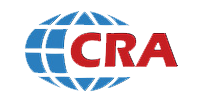DuraGuard™ – For Cooling Towers
Cooling Towers are a very important part of many chemical plants, power plants and process plants. Mechanical draft towers are widely used in industry which utilizes fans to force or suck air through circulated water. Usually, there are several problems in cooling towers as detailed below.
Corrosion
Cooling tower frames, water inlet & outlet pipes, fan assembly consists of top/bottom hub plate, hub spool, clamps, & taper bush are made of carbon steel. These components get corroded due to high humidity & warm conditions obtaining at cooling tower systems. Also, ozone and other polluting gases in the surrounding atmosphere is the major cause of corrosion.
Microbiologically Induced Corrosion (MIC)
Cooling water system offers a favorable environment for the growth of microorganisms. Microbiological growth on wetted surface leads to formation of biofilms. These cause fouling. Microbiological fouling is the result of abundant growth of algae, fungi and bacteria on surfaces. MIC is the result of availability of organic & inorganic nutrients, factors such as temperature, normal pH range and continuous aeration of the cooling water. Wood used in cooling towers deteriorate due to chemical, biological & physical causes.
| Duraguard video |
|
|
Duraguard™ – Surface Protection System
Duraguard™ is a unique process. It uses Dimple’s four innovative chemicals in two-stage process as under:
Stage I: Cleaning
- Duraclean: Surface preparatory agent
Stage II: Coating
- Duramix 1: A Blend of Ceramic Ironite, Active Ceramic & Cement
- Duramix 2: Water miscible modified Epoxy Resin
- Duramix 3: Modified Epoxy Hardener
Detailed working of Duraguard™ System is described below:
Surface Preparation
This involved use of patented process technology (European Patent No – EP 1888815B & Indian Patent No – 224346) of Duraclean (a specialized organic polymer) as corrosion removal/inhibition.
Duraclean converts oxides on surface into docile form. By this conversion, burr (oxides) on surface, if not docile oxide, can be cleaned below 50 microns. The growth of oxides is always in mathematical progression hence lesser the burr on surface lesser is the rate of corrosion. Also, bio & bi-metallic corrosion is controlled by Duraclean. Such method of surface preparation eliminates process like shot blasting, which is not eco-friendly. Shot blasting embeds some oxides into mother metal, which later erupts from the surface and cracks the protective film built on top.
Protective Coating
Duraguard™ is a 3-pack system for providing a complete solution for long-lasting corrosion control and giving the surface effective chemical resistance. Two coats of Duraguard™ are given by mixing Duramix 1, Duramix 2, and Duramix 3 & water in predefined ratio.
- The unique combination of surface preparation, blend of ceramic ironite, puff ceramic cement & modified epoxy gives complete resistance to chemi cals.
- This coating also gives better corrosion, abrasion & UV resistance as compared to acid resistant paint.
Key Features of DuraGuard
|
|
|
|
|
|
|
|
|
|
|
|
|
|
Properties of Duraguard™
| Properties | Test Standard | Unit | Limit | Observation |
| Scratch Hardness with 1.5 Kg load | IS 101 Part 3 / Sec. 2 | Visual | No such scratch to show bare metal | Passes |
| Abrasion Resistance (CS17 wheel, 1 Kg load, 5 , 000 revolutions | ASTM D 4060 | Weight loss in grams | 0.3 grams max. | 0.0845 |
| Impact resistance with 1.814 Kg load & 100.25 cm Height | ASTM D 2794 | Nm | Minimum 2.8 | 4.448 |
| Chemical resistance | ASTM D 543 | Visual | Shall not show any sign of blistering, wrinkling & lifting of the film | Passes |
| Adhesion | ASTM D 4541 | MPa | 2.6 | |
| Corrosion accelerated Salt spray in solution of 5% NaCl, 0.26 gm/ltr CuCl 2 and pH 3.1 to 3.3 | ASTM B 117 | Hours | 72 | 72 |
| Salt spray test | ASTM B 117 | Hours | 2,000 | 2,000 |
| UV Resistance test | Hours | 500 | 500 |
Comparison of DuraGuard with Epoxy Painting
| Parameter | Epoxy Paint | Duraguard™ |
| Salt spray test at 5% c onc entration of NaCl. | 96 Hours | 2,000 Hours |
| Corrosion accelerated Salt Spray (CASS) in solution of NaCl 5%, CuCl2 0.26 gm/ltr and pH 3.1 to 3.3 by Acetic Acid. | Not specified | 72 Hours |
| UV Resistance | Not specified | 500 Hours |
| Abrasion Resistance | Not specified | Weight loss of 0. 0845 grams after 5,000 rev. of CS17 wheel |
| Impact Resistance | Not specified | Withstand 4.448 Nm force |
| Acid / Alkali Resistance | Up to 25% Concentration | Gives resistance to 1.800 & 1.280 Sp. Gravity H 2 SO 4 At 60 O C for 24 Hours |
| Hard Drying | 14 Hours | 4 Hours |
| Overcoat time | 12 Hours | 3 Hours |
Case Study of Cooling Tower in Power Plant
Based on the extensive trials and commercial applic ation in the cooling tower section of the power plant the results achieved by Duraguard™ clearly in dicates improvements as captured below
- Duraguard™ gives 3 times protection life as comp ared to epoxy paint for steel structures, fans & water Inlet / outlet pipes in cooling tower.
- Duraguard™ eliminates formation of microorganism like algae, fungi, bacteria for 3 years.
- Life of wood fills is increased by Duraguard™ .
Duraguard™ Application Photos:
| Condition of the pipe before | Condition after treatm ent |
 |
 |
| The condition of the hub spool before | Condition after treatment |
 |
 |
| The condition of the Clamp before | Condition after treatment |
 |
 |
| The condition of Hub Plate | Condition after treatment |
 |
 |








